To tilt or not to tilt: Comparing residential solar designs in Fairbanks
By Savannah Crichton
July 07, 2024
“As I write this at 10:30 am, my 10.7 kilowatt system is cranking out 8.7 kilowatts. Pretty sweet,” Fairbanks homeowner Eric Buetow says about his home’s solar array. For him, that means he pays nothing for electricity for eight months out of the year – it’s all generated by the sun.
A growing number of homeowners in Alaska have capitalized on adding solar to their properties. Another Fairbanks homeowner, Bob Henszey, explains “My wife and I had thought about solarizing our home for several years; primarily as our part to help reduce carbon emissions but also to help reduce our electric bill.”
Almost 16 Megawatts (2,700 systems) of distributed rooftop solar have been installed in the Railbelt region of Alaska to date, equivalent to about 75 acres of ground-mounted solar. Over 2 megawatts of additional installed capacity is added each year in the residential and small commercial sector.
Typically for residential solar installations in Alaska and the US, solar panels are mounted flush to the roof’s angle. But solar developers in Fairbanks have followed a precedent of installing solar panels on rooftops at steep angles with metal racking, which comes at an additional cost. This high tilt angle is due to a combination of predictive generation, local building code requirements, and optimization of solar arrays for latitude, wind, and snow loads.
Fairbanks receives an average annual snowfall of around 5 ½ feet, a layer that sticks around until temperatures climb above freezing, usually in April. Flush mounted solar installations on roofs with an average pitch of around 18 degrees usually accumulate snow until it completely melts off in the spring. On tilted arrays, snow slides off the tilted panels earlier, but can still pile up at the bottom of the array.
Solar arrays with tilted panels usually have a higher upfront cost to install than flush-mounted panels, but there are no analyses about the real-world effect of tilt angle on energy production. This case study compares the monthly and seasonal energy production of flush-mounted and tilted solar panels in Fairbanks to determine if mounting angle makes a significant impact on solar energy production.
I analyzed three residential photovoltaic systems in Fairbanks over 21 months of production. Each array’s energy output was normalized to its system’s size, and was measured in the standard energy unit of kilowatt-hours.
- Sunny Flush The flush-mounted system is installed parallel to the 18 degree pitch roof on a home in Fairbanks with minimal shading.
- Lower Tilt This home has tilted panels, but to a low angle of about 50 degrees.
- Shady Tilt With panels tilted to the common angle of 70 degrees in Fairbanks, this home is slightly shaded by birch trees from the southeast and southwest.
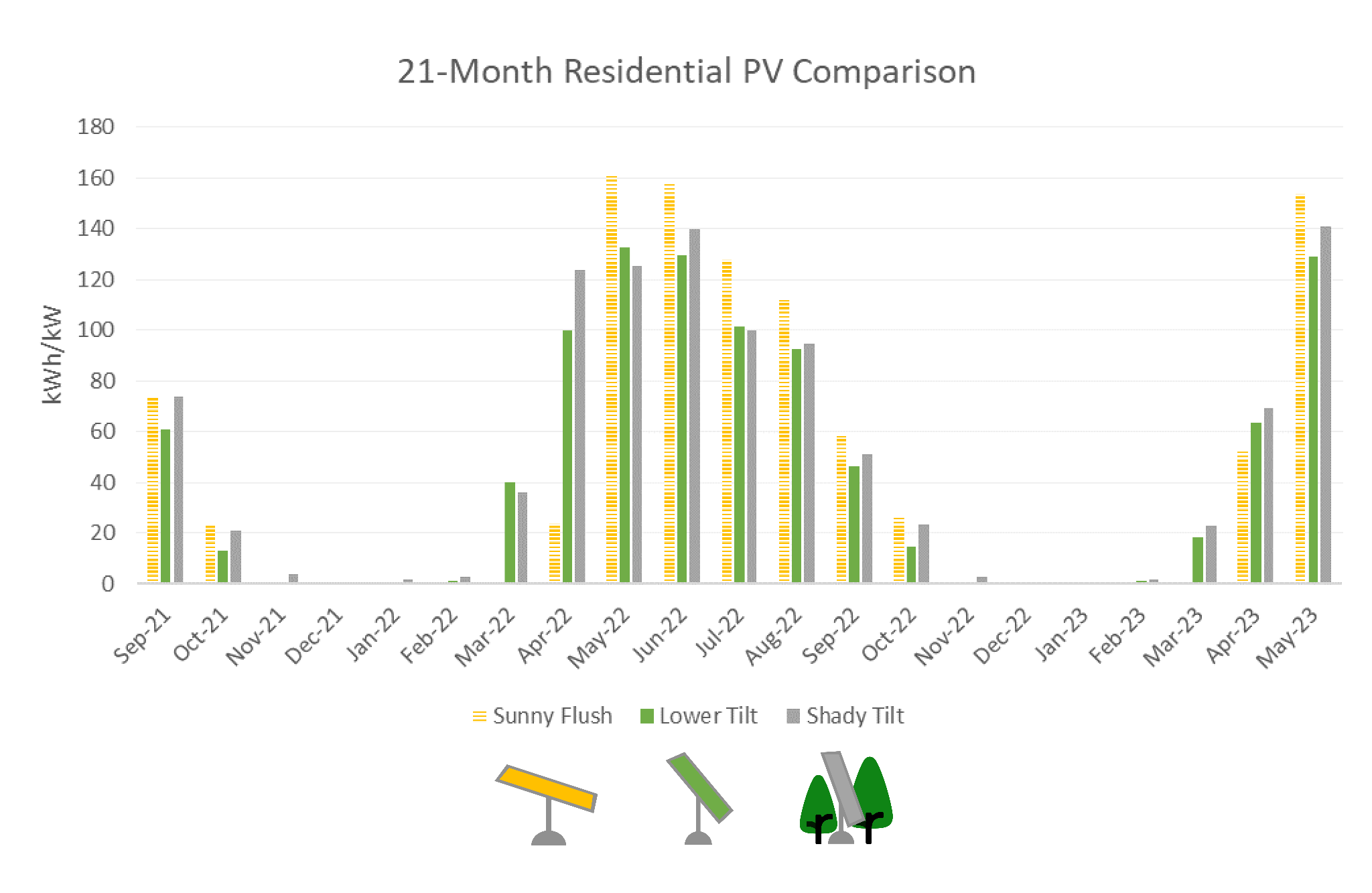
Monthly residential PV energy production over 21 months
The Sunny Flush system is competitive with the two tilted systems, producing slightly more energy than both between May and October. March and April stand out as months where the flush system produces significantly less energy than the tilted systems. Fairbanks starts to experience 12 hours of sunlight in March, and only the tilted panels are generating energy–suggesting better snow-shedding capabilities from panels with higher tilt angles.
By breaking out the monthly data into seasons, we can visualize when the Sunny Flush case falls behind. Winter is November, December, and January; Spring is February, March, and April; Summer is May, June, and July; Fall is August, September, and October.
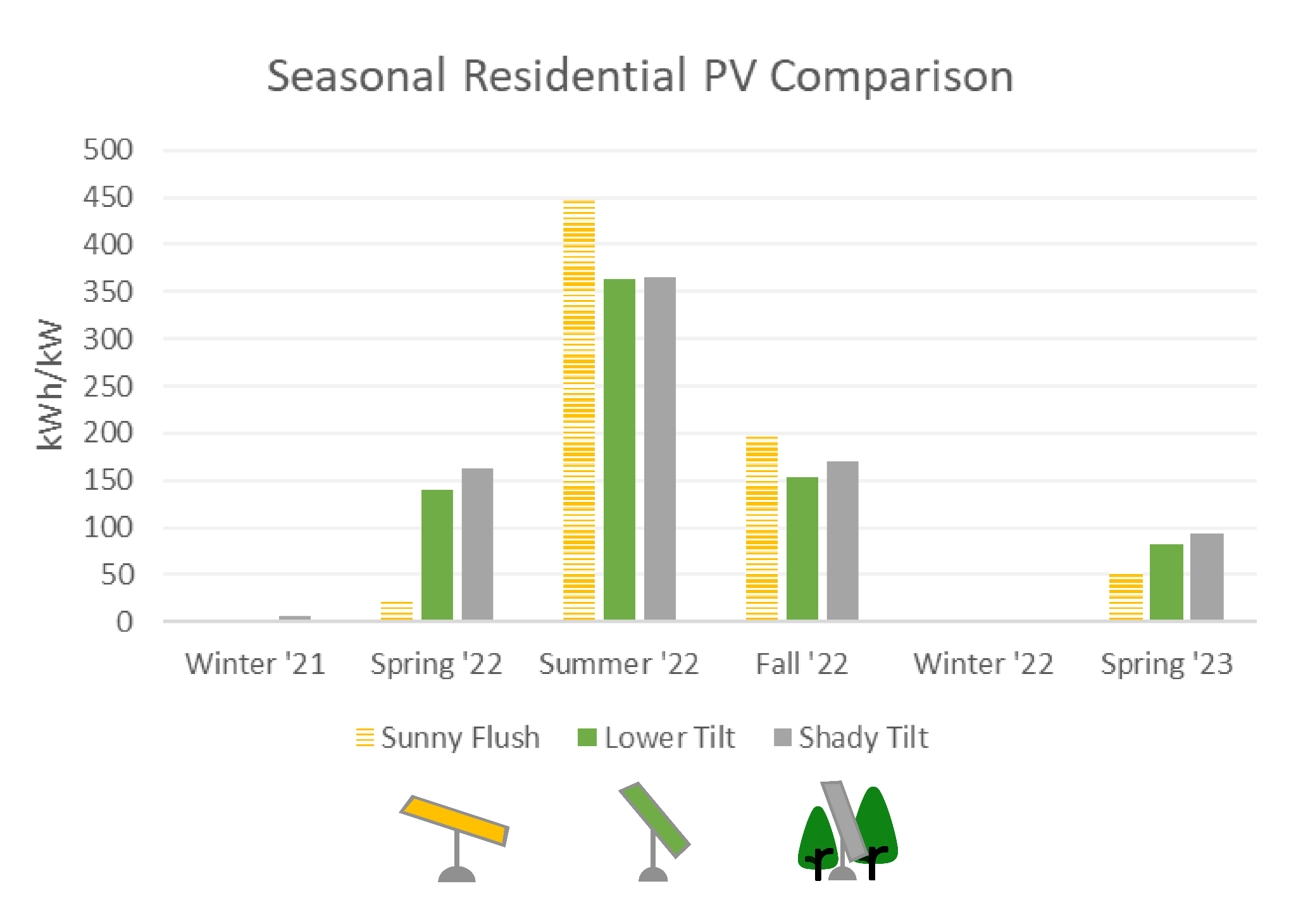
Residential PV production over six seasons
When snow is melting off of rooftops in the spring, tilted systems have an advantage, their angle allowing them to effectively shed snow and produce energy. The tilted systems produce a quarter of their annual energy in both the fall and the spring, producing half of their annual energy in the summer.
By comparison, the Sunny Flush system produces two thirds of its energy in the summer and the other third in the fall. In the spring, the Sunny Flush system is mostly covered in snow, producing almost no energy.
It’s worth noting that this specific flush mounted system is unique in its optimal siting–the house sits in a clearing with no tree shading. While the flush system is generally comparable to the tilted systems in terms of annual production, other flush systems with less optimal siting may not produce as much. Buetow, a homeowner with flush-mounted panels, offers that “some of the pros for flush mounts are cost and aesthetics.”
Henszey owns a home with tilted panels. Reflecting on what he would advise folks looking to install solar on their homes, he said “Consider how you would remove snow from the panels…in the spring, I missed-out on about $90 to $115 of power the top row could have generated if they were free of snow.”
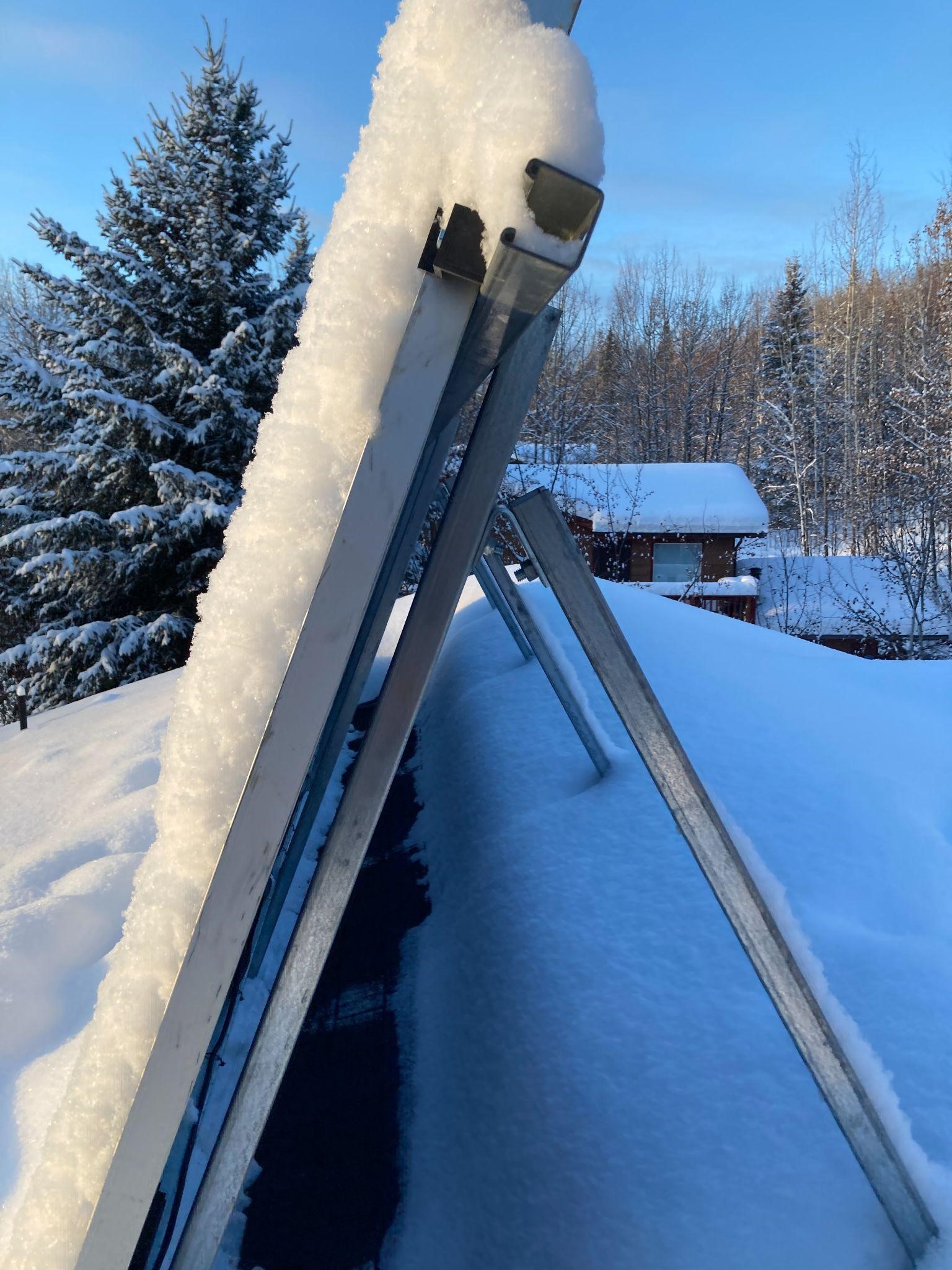
Angled rooftop solar panels in Fairbanks, Alaska
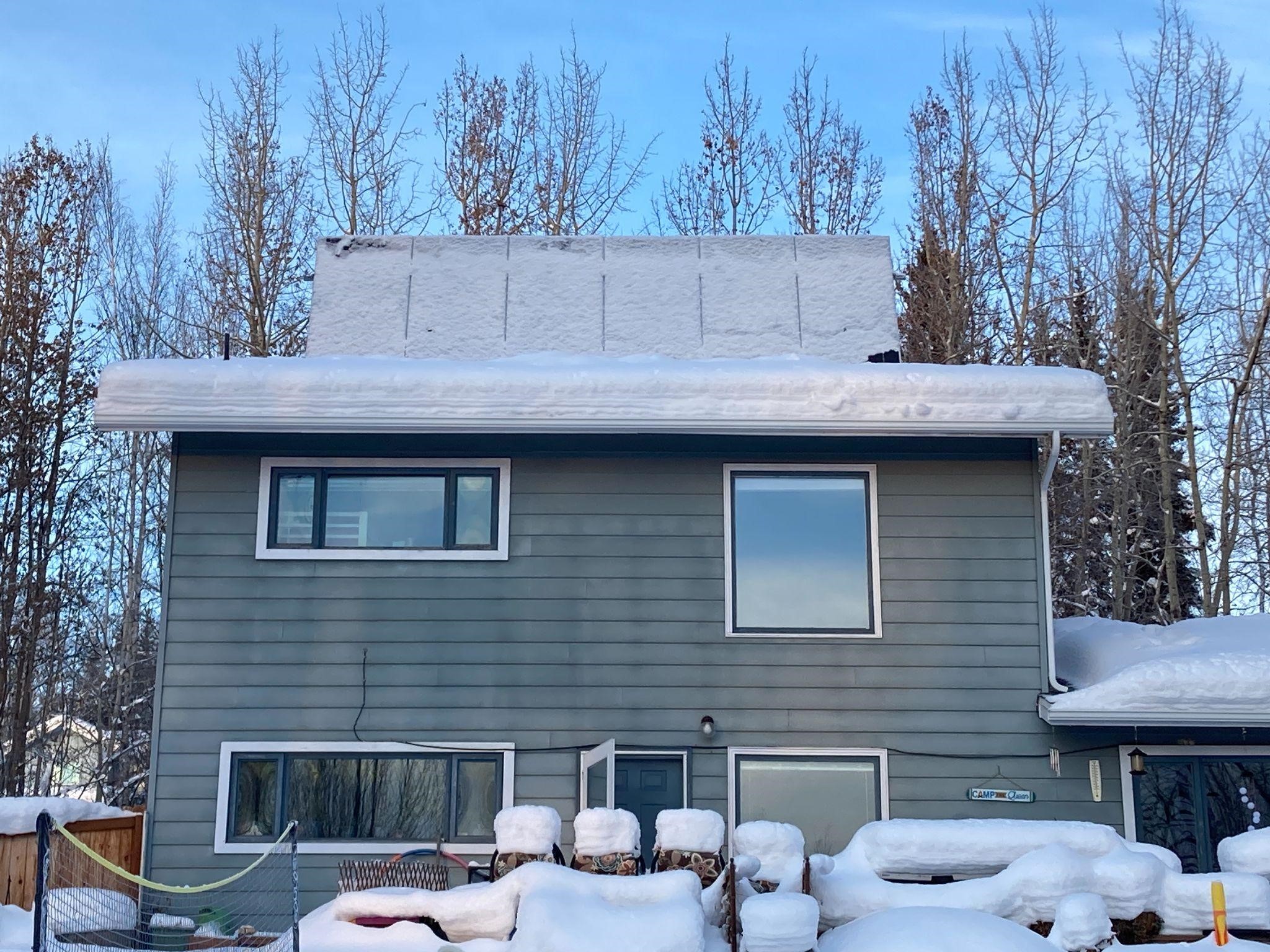
Angled rooftop solar panels in Fairbanks, Alaska
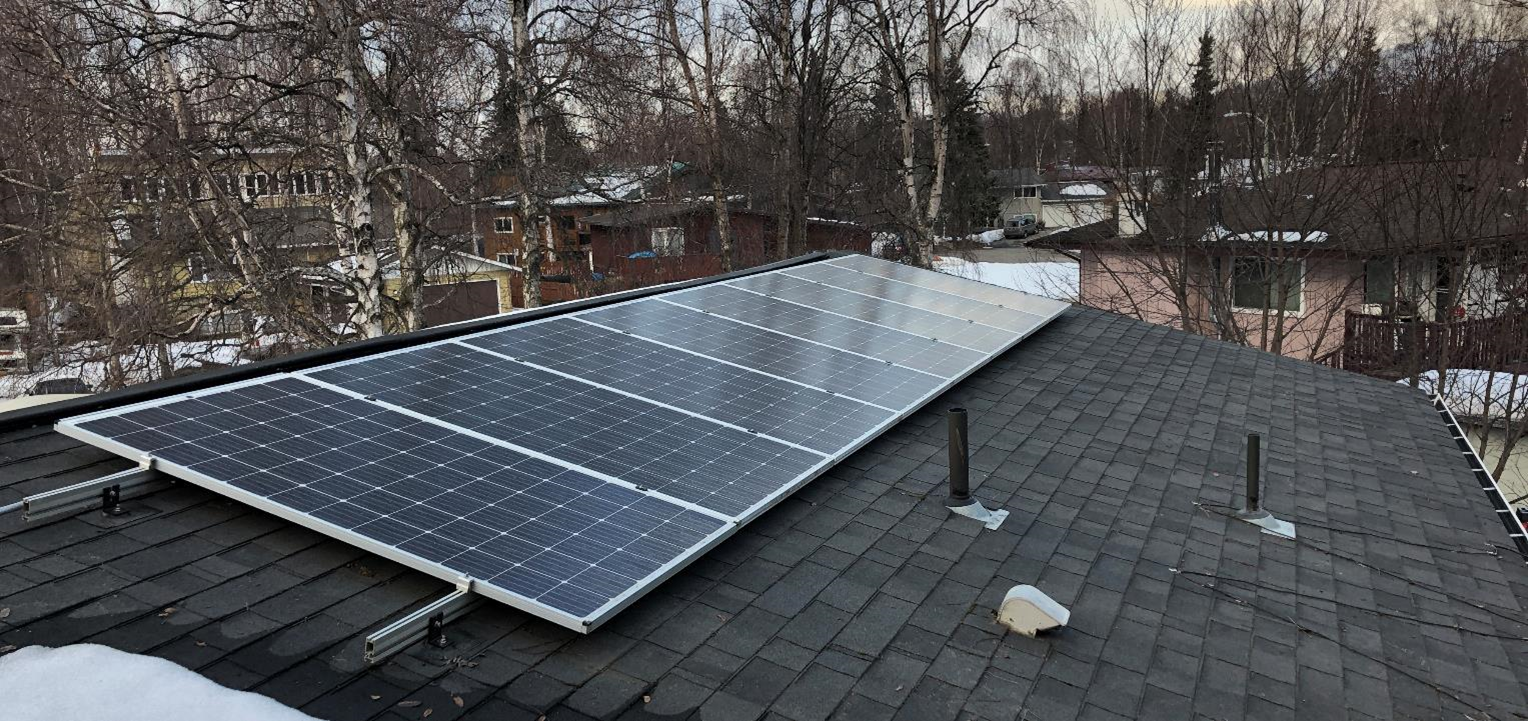
Flush rooftop solar panels in Anchorage, Alaska
Additional Case Studies
To further explore these findings, we can add in two more tilted cases and compare them to the flush-mount over one year.
- Tilt & Vertical This house has tilted panels at around 70 degrees on its roof and vertical panels mounted to an exterior wall.
- Sunny Tilt This system has panels tilted at around 70 degrees and is optimally sited with no tree shading.
Vertical panels are advantageous because snow rarely accumulates on the surface. In the Sunny Tilt case, the owner clears snow from the panels starting in February and maintains the system in snow-free conditions. Due to these factors, these two cases are not fair comparisons to the typical rooftop system with respect to snow accumulation. However, they provide context on optimal residential solar in near-perfect conditions.
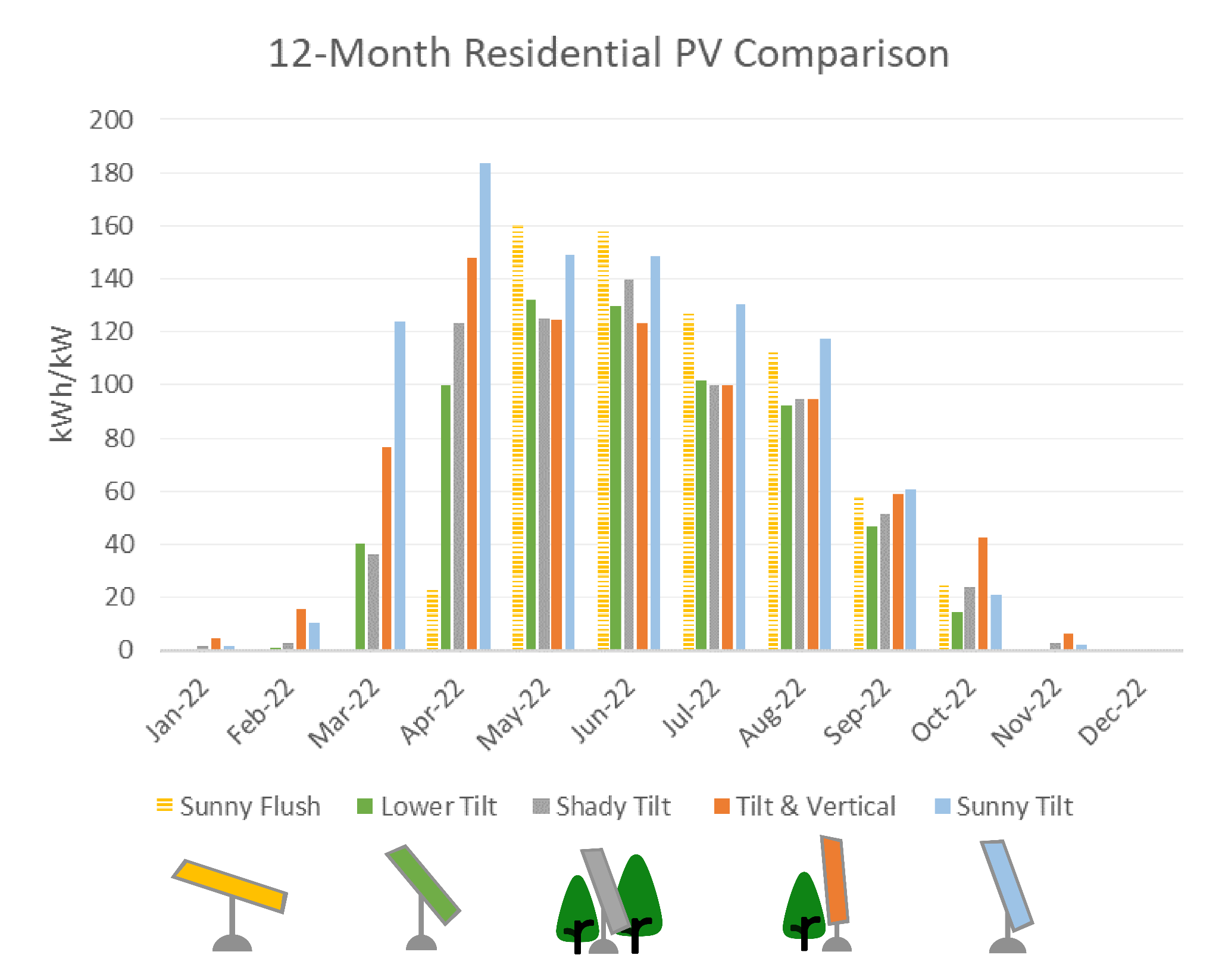
Residential PV production for all cases in 2022
After adding these other tilt scenarios, a similar seasonal pattern emerges. In March and April, the Tilt & Vertical case and Sunny Tilt dramatically outperform the original tilted arrays, suggesting the advantages of vertical panels and snow-clearing in the spring.
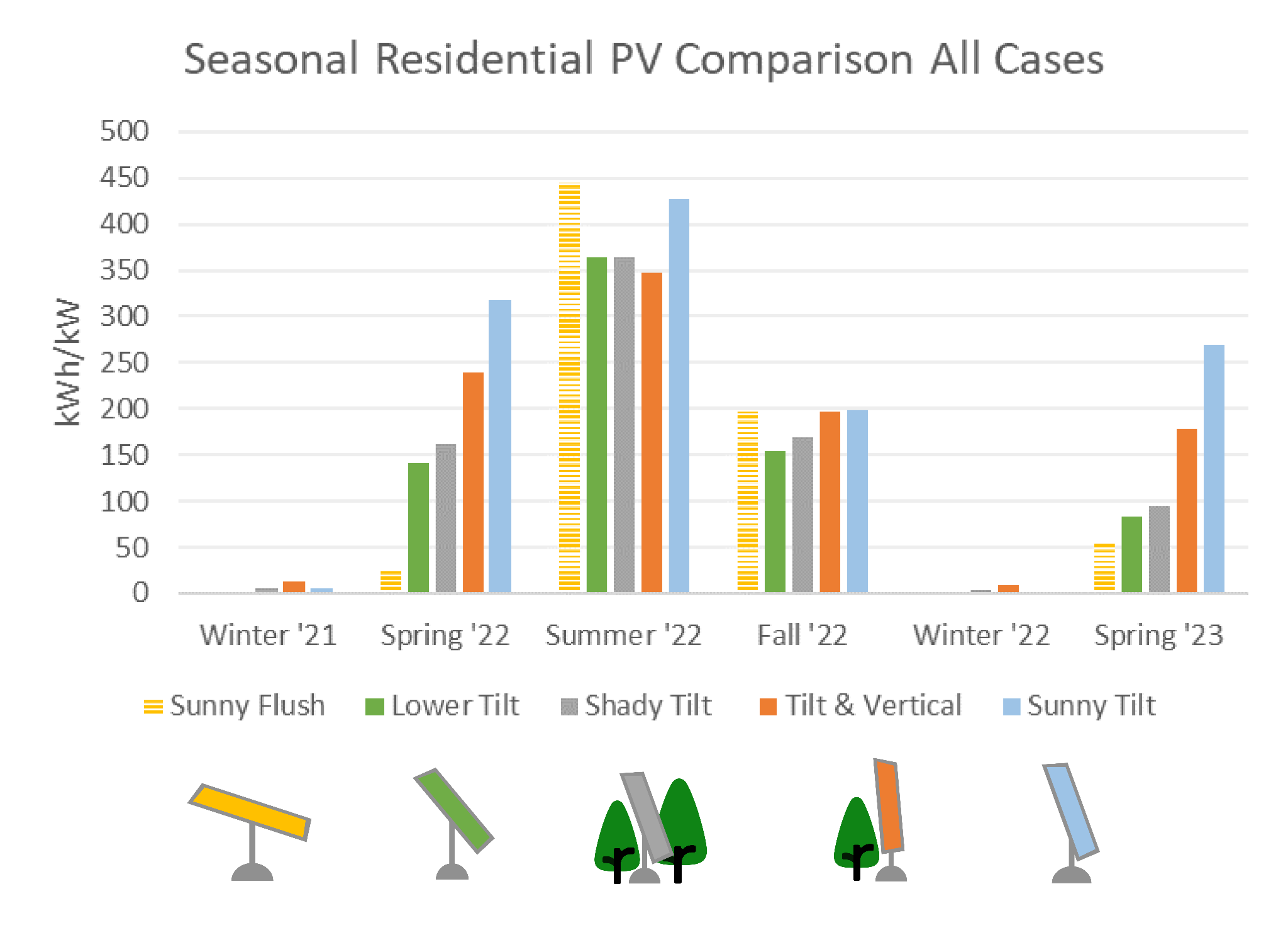
Residential PV production for all cases over six seasons
In summer and fall, the Sunny Flush array produces a similar amount of energy as the Sunny Tilt array. Optimal siting plays a large role in both sunny arrays’ high production. Tilt & Vertical and Sunny Tilt both have very high spring production, further validating that cleared panels from either vertical racking design or manual clearing increases panel productivity.
Homes rarely provide optimal siting for solar. Especially in Fairbanks, where many homes are tucked into forested areas, shading is common and many roofs are not oriented exactly south. Looking at this data, it appears that equivalently sited flush-mount arrays generally outperform in the sunny months, whereas tilt-mounted arrays generally outperform in the snowy ones. Regardless of the chosen solar design, Buetow adds that either way you’re “not paying an electric bill for months and months!”
Another homeowner in Fairbanks, Terry Chapin, confirms that residential solar “is all about location, location, location…If your home isn’t in a sunny location, there are community solar projects in which a group of homeowners work together to install solar panels in a good location and get the same environmental and cost benefits.”
Some installers are also now using bifacial solar panels, which can absorb solar energy from the front and back side of the module. Split cell panels, which allow the upper and lower half of a panel to operate independently, can ensure the top half produces energy even while the bottom half may be blocked by snow. These technologies will further improve the production of tilted solar arrays.
Flush-mounted solar panels can take advantage of summer’s long daylight hours more efficiently than some tilted panels, but snow accumulation greatly inhibits their production in the winter and spring. This lack of production during the sunny months of March and April mean that on an annual basis, tilted arrays usually outperform low-slope flush mounted arrays in Fairbanks. When it comes to installing residential solar panels in Alaska, Chapin concludes “My only regret is that we didn’t install more of them.”
To see more case studies and data from tilted solar panel systems in Fairbanks, visit https://www.uaf.edu/acep/research/solar-technologies.php
This research effort is supported through the Alaska Regional Collaboration for Technology Innovation and Commercialization (ARCTIC) program, sponsored by the Department of the Navy, Office of Naval Research's ARCTIC program under ONR award number N00014-22-1-2049.


